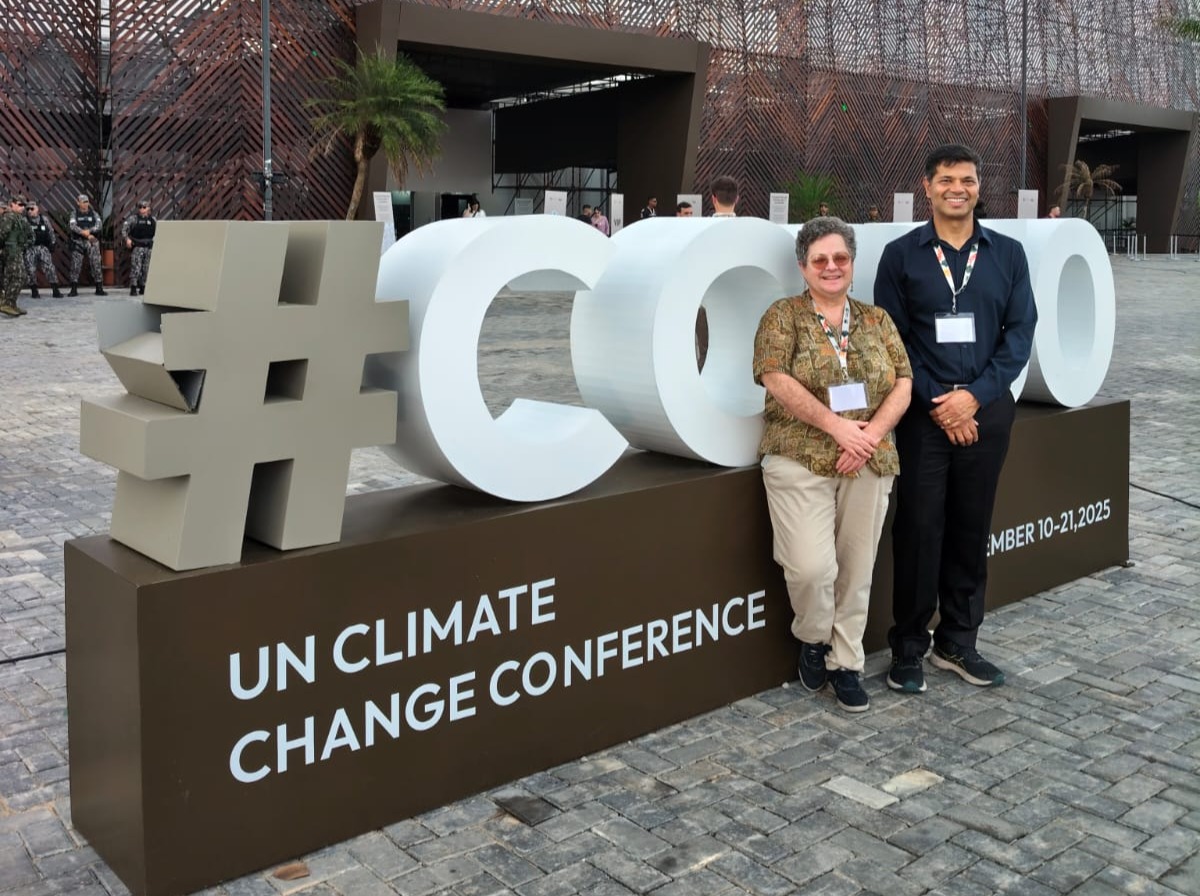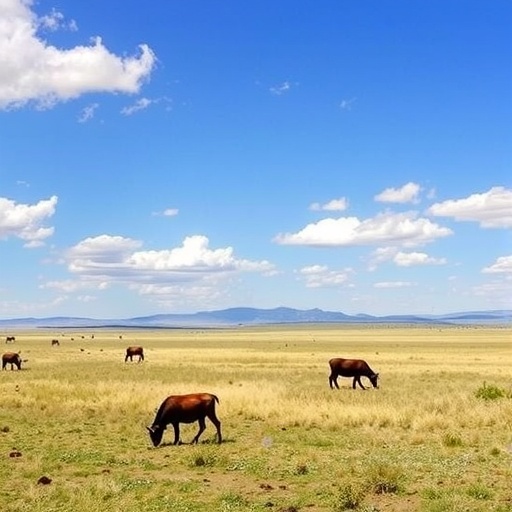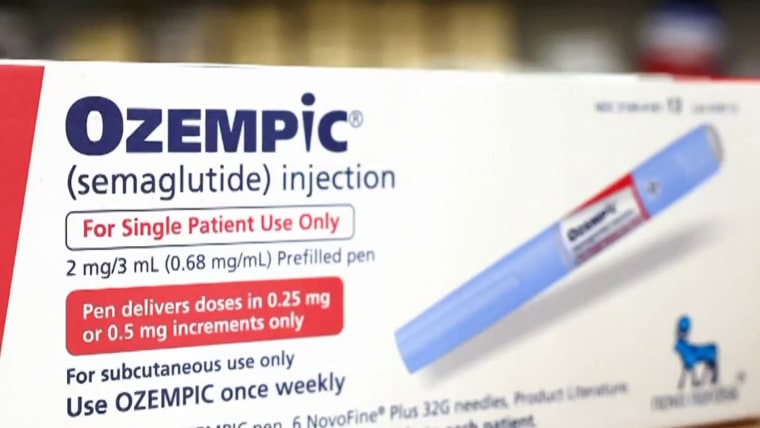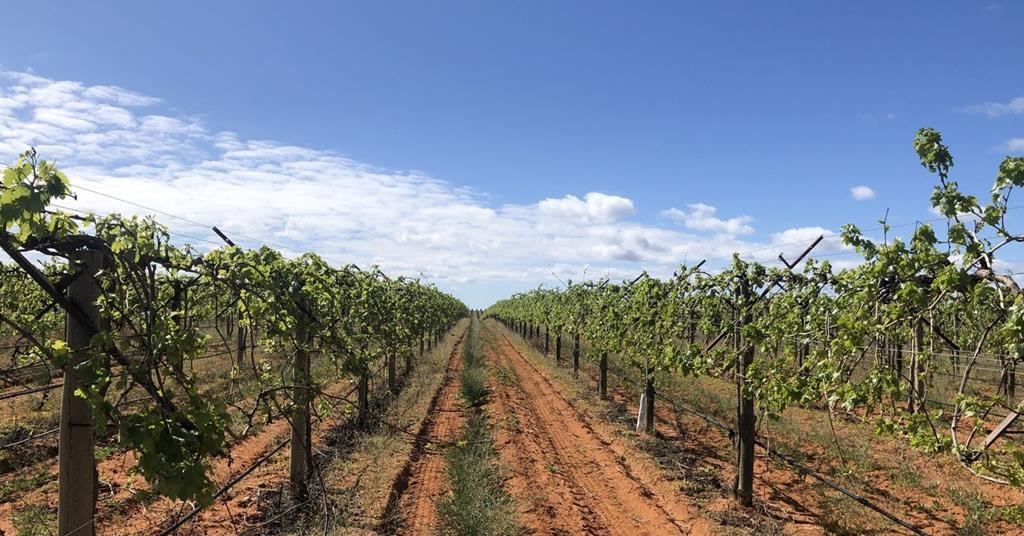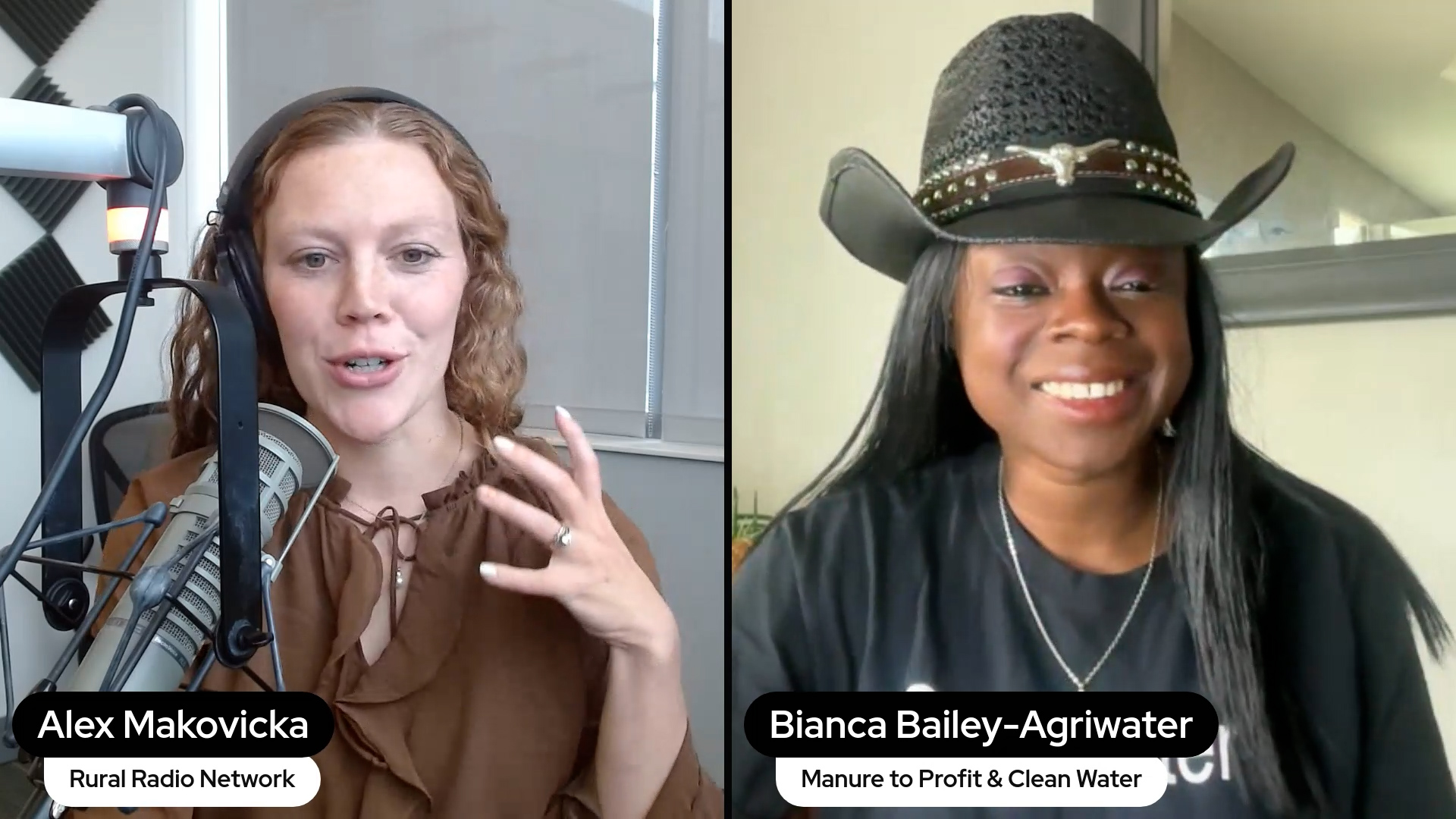Letter From The Farm | How a Young Lithuanian Farmer Blends Science, Soil & Community – resilience.org

Case Study Report: Sustainable Farming and Community Development in Kiemeliai, Lithuania
1.0 Introduction: A Model for Sustainable Rural Enterprise
This report details the agricultural and community-building initiatives of Vytenis Grigas, a young farmer in Kiemeliai, Lithuania. His farm, established five years ago, serves as a practical experiment in sustainable agriculture, directly contributing to several Sustainable Development Goals (SDGs). As a board member of the Lithuanian Young Farmers Union and a lecturer in psychology, Mr. Grigas integrates scientific principles with community engagement to foster a resilient local food system. This case study, based on a site visit in August 2025, examines his contributions to sustainable development.
2.0 Alignment with Sustainable Development Goals (SDGs)
The farming practices and community integration demonstrated by Mr. Grigas’s enterprise align with numerous SDGs, particularly those focused on food, health, community, and environment.
2.1 SDG 2 (Zero Hunger) & SDG 12 (Responsible Consumption and Production)
The farm’s core mission is to advance sustainable agriculture and ensure local food security.
- Sustainable Production: The farm employs permaculture principles, composting, and mulching to enhance soil health and build humus, contributing to sustainable food production systems (Target 2.4).
- Local Food Systems: Production of vegetables, fruits (strawberries, pears, cherries), hazelnuts, and mushrooms is geared towards local and regional markets, shortening supply chains and promoting responsible consumption (Target 12.2).
- Consumer Partnership: A direct relationship with consumers is fostered, building trust and value for sustainably produced food. Customers are occasionally invited to assist with harvesting in exchange for reduced prices, creating a participatory food system.
- National Food Security: Mr. Grigas advocates against land grabbing by large corporations, arguing that supporting small-scale, diverse farms is essential for national food security, a key component of SDG 2.
2.2 SDG 3 (Good Health and Well-being) & SDG 15 (Life on Land)
The project is founded on the principle that ecological health is intrinsically linked to human health.
- Healthy Ecosystems for Healthy People: The operational philosophy is “Healthy soil, healthy plants, healthy people,” directly linking the restoration of terrestrial ecosystems (Target 15.3) with the promotion of well-being (Target 3.9).
- Soil Restoration: Significant investment and labor have been dedicated to improving challenging, wet land through a sophisticated drainage system and soil-building practices. This focus on creating a “living soil” is fundamental to achieving land degradation neutrality.
- Biodiversity: A broad variety of crops are planted, enhancing agrobiodiversity and resilience against pests and climate-related challenges like fungus, which has affected monoculture crops in the region.
2.3 SDG 8 (Decent Work and Economic Growth) & SDG 11 (Sustainable Cities and Communities)
The initiative contributes to the economic and social revitalization of a rural community.
- Rural Economic Diversification: Mr. Grigas’s enterprise is part of a wave of new businesses, including rural tourism (“Lavender village”) and specialized services, started by newcomers to Kiemeliai. This diversifies the local economy and creates sustainable livelihoods (Target 8.5).
- Community Revitalization: The influx of new residents and entrepreneurs is creating a “new village,” fostering a dynamic community and counteracting rural decline, thereby making the settlement more inclusive and sustainable (Target 11.3).
- Diversified Income: To ensure economic stability during the farm’s experimental phase, Mr. Grigas maintains income from lecturing and garden maintenance services, demonstrating a resilient model for new entrants into agriculture (Target 8.2).
3.0 Challenges and Advocacy for Sustainable Policy
Despite progress, the project faces significant challenges that reflect broader systemic issues in agriculture, requiring policy-level interventions.
3.1 Operational and Environmental Challenges
- Climate Change Impacts: Recent heavy rainfall has led to crop losses (strawberries) and increased fungus problems, highlighting the vulnerability of agriculture to climate change and the need for adaptive strategies (SDG 13: Climate Action).
- Economic Uncertainty: Future farm investments are constrained by potential reductions in the EU’s Common Agricultural Policy (CAP) funding, as resources are reallocated towards security and defense.
3.2 Systemic and Policy Challenges
- Land Concentration: Mr. Grigas, through his work with young farmers’ organizations, actively campaigns against the concentration of land and EU subsidies in the hands of large agribusinesses. He argues this practice undermines small farmers and jeopardizes national food security.
- Advocacy for Policy Change: He advocates for member states to impose ceilings on EU subsidies for large landowners, a provision within EU rules, to ensure public funds support a transition to more sustainable and equitable farming models (SDG 17: Partnerships for the Goals).
4.0 Conclusion and Outlook
The farm in Kiemeliai represents a holistic approach to sustainable development, demonstrating how small-scale, innovative agriculture can contribute to food security, environmental restoration, and community well-being. While facing climatic and economic uncertainties, the project’s resilience is bolstered by a diversified income strategy and strong community ties. The growing consumer demand for organic and locally sourced products in Lithuania provides a positive outlook. Mr. Grigas’s work serves as a compelling case for policy frameworks that support new entrants and sustainable practices to achieve the Sustainable Development Goals in rural areas.
Analysis of Sustainable Development Goals in the Article
1. Which SDGs are addressed or connected to the issues highlighted in the article?
The article highlights several issues and initiatives that connect to a range of Sustainable Development Goals (SDGs). The analysis identifies the following relevant SDGs:
- SDG 2: Zero Hunger: The article focuses on sustainable and resilient agricultural practices, food security, and the viability of small-scale farmers. Vytenis Grigas’s farm is an “experiment for future farming” that aims to produce healthy food locally.
- SDG 3: Good Health and Well-being: A direct link is made between farming methods, food quality, and human health. The farmer’s philosophy is “Healthy soil, healthy plants, healthy people,” emphasizing the production of nutritious food without harmful chemicals.
- SDG 8: Decent Work and Economic Growth: The article discusses the creation of new economic opportunities and diversification in a rural village, moving beyond traditional agriculture to include tourism and other small businesses.
- SDG 11: Sustainable Cities and Communities: The story illustrates the revitalization of a rural community through the influx of “newcomers” who are starting businesses and “co-created a new village life,” strengthening the social and economic fabric of the village.
- SDG 12: Responsible Consumption and Production: The farmer’s model is based on local production for local markets, building direct relationships with consumers, and using sustainable resource management techniques like permaculture and composting.
- SDG 13: Climate Action: The article touches upon the need for agriculture to adapt to climate change, mentioning challenges like “recent heavy rainfall” and the importance of building resilient farming systems and healthy soil.
- SDG 15: Life on Land: The core of the farmer’s work is restoring and improving land quality. He is actively working to improve “pretty wet and not specifically fertile” land by building up soil health and humus.
- SDG 17: Partnerships for the Goals: The farmer is actively engaged in policy advocacy through his roles in the Lithuanian Young Farmers Union and the European Council of Young Farmers (CEJA), working to influence agricultural policy for a more sustainable future.
2. What specific targets under those SDGs can be identified based on the article’s content?
Based on the activities and issues described, the following specific SDG targets can be identified:
- Target 2.3: By 2030, double the agricultural productivity and incomes of small-scale food producers. The article profiles Vytenis, a small-scale farmer, and his struggle to create a stable income from his farm, which is a central challenge for this target.
- Target 2.4: By 2030, ensure sustainable food production systems and implement resilient agricultural practices… that progressively improve land and soil quality. Vytenis’s use of “permaculture, composting, mulching and soil life” to build “new humus” and adapt to challenges like heavy rainfall directly aligns with this target.
- Target 3.9: By 2030, substantially reduce the number of deaths and illnesses from hazardous chemicals and soil pollution. By practicing a form of organic farming that avoids the “chemicals and synthetic fertilisers” used by his conventional neighbors, the farmer contributes to producing healthier food and maintaining a cleaner environment.
- Target 8.9: By 2030, devise and implement policies that promote sustainable tourism that creates jobs and promotes local culture and products. The mention of new businesses in the village, such as the “Lavender village” including rural tourism” and “summer community village with guest houses,” points to this target.
- Target 11.a: Support positive economic, social and environmental links between urban, peri-urban and rural areas. The story of people like Vytenis moving from the city to “a small village like Kiemeliai” and starting new enterprises exemplifies the strengthening of rural areas and creating positive new links.
- Target 12.2: By 2030, achieve the sustainable management and efficient use of natural resources. The farmer’s methods, which focus on soil building and using on-farm resources like compost, are examples of sustainable resource management.
- Target 13.1: Strengthen resilience and adaptive capacity to climate-related hazards and natural disasters in all countries. The farmer’s efforts to manage the effects of “recent heavy rainfall” on his crops and his choice of diverse and resilient plant varieties demonstrate building adaptive capacity at the farm level.
- Target 15.3: By 2030, combat desertification, restore degraded land and soil… and strive to achieve a land degradation-neutral world. The farmer’s primary challenge was the poor quality of his land (“pretty wet and not specifically fertile”), and his work to build “new humus” is a direct effort to restore degraded land.
- Target 17.17: Encourage and promote effective public, public-private and civil society partnerships. Vytenis’s active role as a “board member of the Lithuanian Young Farmers Union” and his participation in the “European Council of Young Farmers (CEJA)” to debate the future of the Common Agricultural Policy is a clear example of civil society partnership for policy change.
3. Are there any indicators mentioned or implied in the article that can be used to measure progress towards the identified targets?
The article does not cite official SDG indicators, but it contains qualitative and descriptive information that can serve as practical indicators of progress:
- Indicator for Soil Health (Targets 2.4, 15.3): The statement that “New humus is building up quickly” serves as a direct qualitative indicator of improved soil quality and land restoration.
- Indicator for Sustainable Practices (Target 2.4): The adoption of specific farming techniques such as “permaculture, composting, mulching” is an indicator of the implementation of sustainable agricultural practices.
- Indicator for Economic Viability (Target 2.3): The fact that the farmer’s “main income still comes from lecturing” is an indicator that the small-scale farm has not yet achieved full economic self-sufficiency, highlighting the challenges in meeting this target.
- Indicator for Rural Economic Diversification (Target 8.9): The establishment of new businesses in the village, including a “‘Lavender village’ including rural tourism, a dog breeder and trainer, or the summer community village with guest houses,” serves as an indicator of economic diversification and growth in a rural area.
- Indicator for Community Revitalization (Target 11.a): The presence of a “new village” made up of “newcomers” who have “co-created a new village life” is a qualitative indicator of rural revitalization and demographic renewal.
- Indicator for Consumer Awareness and Local Markets (Target 12.2): The development of a system where customers “help with harvesting” and the observation that “more and more people in Lithuania are looking for such [organic] products” are indicators of growing consumer awareness and the strengthening of local food systems.
- Indicator for Policy Engagement (Target 17.17): The farmer’s active membership and leadership roles in national and European young farmers’ organizations (Lithuanian Young Farmers Union, CEJA) is a clear indicator of civil society engagement in policy-making processes.
4. SDGs, Targets and Indicators Table
| SDGs | Targets | Indicators (as identified in the article) |
|---|---|---|
| SDG 2: Zero Hunger | 2.4: Ensure sustainable food production systems and implement resilient agricultural practices that improve land and soil quality. | Use of permaculture, composting, and mulching; Observation that “New humus is building up quickly.” |
| SDG 3: Good Health and Well-being | 3.9: Substantially reduce illnesses from soil pollution and contamination. | Farming practices that avoid “chemicals and synthetic fertilisers”; The guiding principle of “Healthy soil, healthy plants, healthy people.” |
| SDG 8: Decent Work and Economic Growth | 8.9: Promote sustainable tourism that creates jobs and promotes local products. | Establishment of new rural businesses like the “‘Lavender village’ including rural tourism” and “summer community village with guest houses.” |
| SDG 11: Sustainable Cities and Communities | 11.a: Support positive economic, social and environmental links between urban and rural areas. | Movement of “newcomers” from the city to the village, starting new businesses and co-creating a “new village life.” |
| SDG 12: Responsible Consumption and Production | 12.2: Achieve the sustainable management and efficient use of natural resources. | Building direct relationships with consumers who help with harvesting; Growing consumer demand for local, organic products. |
| SDG 13: Climate Action | 13.1: Strengthen resilience and adaptive capacity to climate-related hazards. | Adapting farming practices to cope with “recent heavy rainfall” and fungus issues. |
| SDG 15: Life on Land | 15.3: Restore degraded land and soil. | Actively improving land described as “pretty wet and not specifically fertile” through soil-building techniques. |
| SDG 17: Partnerships for the Goals | 17.17: Encourage and promote effective civil society partnerships. | Active participation and board membership in the Lithuanian Young Farmers Union and the European Council of Young Farmers (CEJA) to influence policy. |
Source: resilience.org

What is Your Reaction?
 Like
0
Like
0
 Dislike
0
Dislike
0
 Love
0
Love
0
 Funny
0
Funny
0
 Angry
0
Angry
0
 Sad
0
Sad
0
 Wow
0
Wow
0



















































.jpg.webp?itok=0ZsAnae9#)














